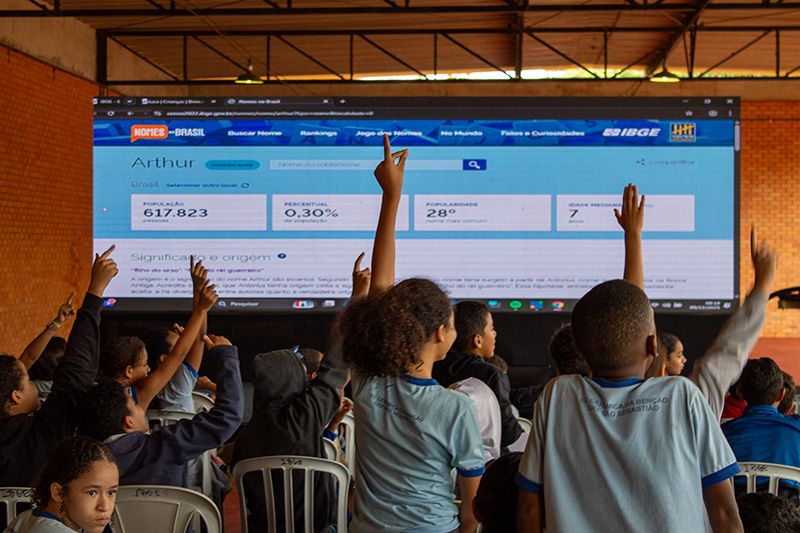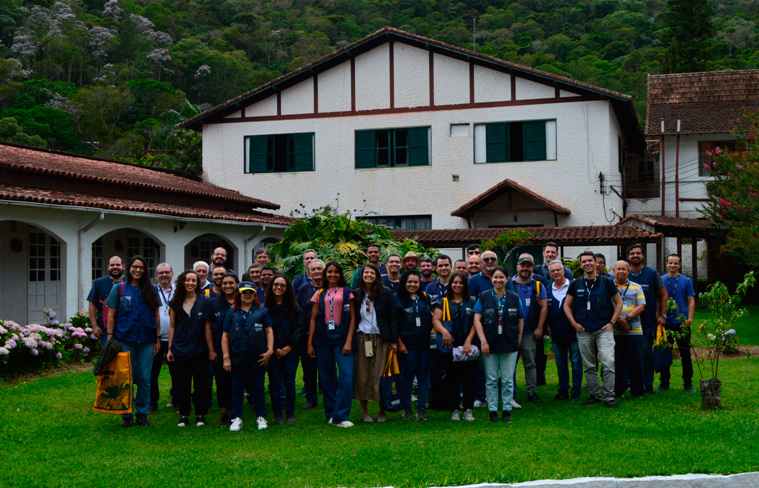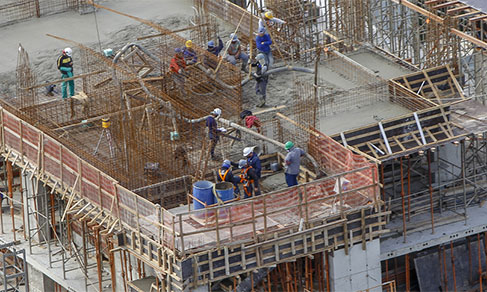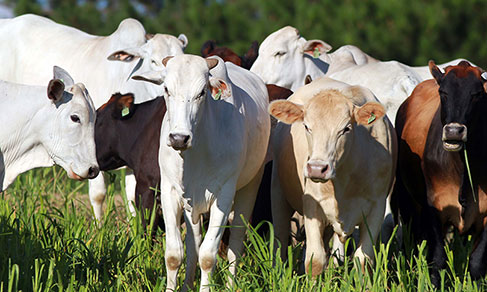National industry
After intense growth in June, national industry drops 1.4% in July
September 04, 2024 09h00 AM | Last Updated: September 04, 2024 04h30 PM
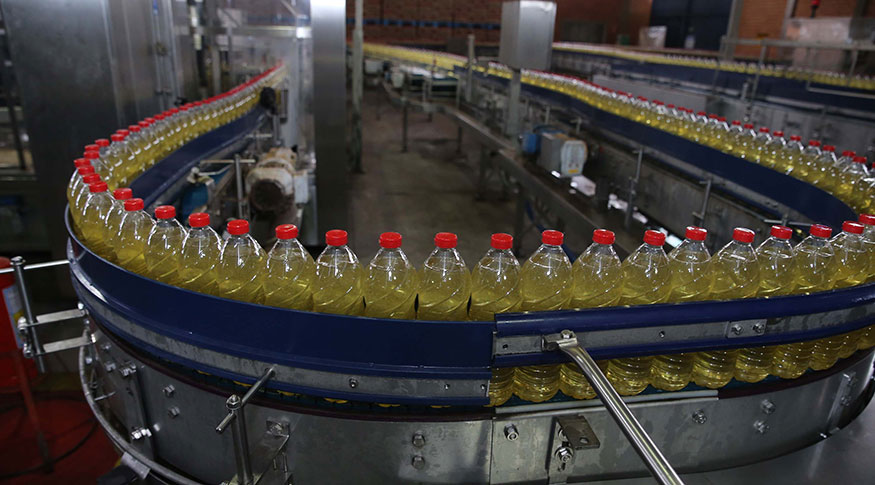
The Brazilian industrial output retreated 1.4% between June and July. The loss of pace happens after the advance of 4.3% registered in the previous month. The industrial output grew 6.1% in relation to July 2023. In the year, it accumulates a rise of 3.2% and, in 12 months, an expansion of 2.2%. With these results, industry is 1.4% above the pre-pandemic level (February 2020) and 15.5% below the peak of the time series, obtained in May 2011. The data are from the Monthly Survey of Industry (PIM Brazil), released today (4) by the IBGE.
"The negative performance of industry in July occurs after an intense growth in the previous month (4.3%), when it was influenced by the resumption of the production by producing units that were (either directly or indirectly) affected by the rainfall occurred in Rio Grande do Sul in May 2024. Most of the retreat recorded this month is related to the significant advance seen in the previous month, though important industrial plants shut down as well. The July´s result is characterized by few, yet relatively important industrial activities dropping their output above the industry average. Nevertheless, when we compare the level of industry in July this year with December 2023, the industrial sector is 1.2% above, maintaining the upward path," explains André Macedo, manager of PIM Brazil.
Between June and July, two out of four broad economic categories and only seven out of 25 industrial sectors surveyed dropped their output. The major negative influences came from food products (-3.8%), coke, petroleum products and biofuels (-3.9%), mining and quarrying industries (-2.4%) and pulp, paper and paper products (-3.2%).
Responsible for the biggest negative impact on the month´s result, the sector of food products (-3.8%) offset the advance of 2.6% reported in June. "Impacted by the effects of the drought in the Brazilian center-south, the output of sugar, beef and soybean products dropped. These items negatively contributed the most this month," states Macedo.
The segment of coke, petroleum products and biofuels (-3.9%) and mining and quarrying industries (-2.4%) interrupted a sequence of two month of growth in their output, a period in which they accumulated gains of 6.4% and 5.7%, respectively. Like the sector of food products, the segment of petroleum products and biofuels, with a loss in the production of alcohol, was affected by the processing of sugarcane as well. In the case of mining and quarrying industries, the two main products, iron ore and petroleum, registered negative results.
Among 18 activities that rose their output, motor vehicles, trailers and bodies (12.0%) exerted the major impact in July 2024, increasing the growth pace when compared with the performance obtained in June (4.8%). "Cars were key to this result. Car pieces, to a lesser degree, also helped this sector," adds Macedo.
The sectors of fabricated metal products (8.4%), miscellaneous manufacturing (18.8%), chemicals (2.7%), leather, traveling goods and footware (12.1%), machinery and equipment (4.2%), printing and reproduction of recorded media (23.4%), rubber and plastic products (3.5%), other transportation equipment (9.0%), electrical machinery and apparatus (5.1%) and manufacture of wearing apparel and accessories (5.5%) also recorded significant advances
Concerning the broad economic categories, still comparing with June, the sector of semi and non-durable consumer goods (-3.1%) recorded the highest negative rate, offsetting part of the growth registered in the previous month (4.5%). The segment of intermediate goods (-0.3%) was the other one to drop, after advancing 2.3% in June.
On the other hand, the sectors of capital goods (2.5%) and durable consumer goods (9.1%) hit positive figures in July 2024 and setpped up the expansions seen in the previous month (0.8% and 5.9%, respectively).
Industrial activity rises 6.1% in the inter-annual comparison
Compared with July 2023, industry grew 6.1% with positive figures in 21 out of 25 sectors, 60 out of 80 groups and 67.3% of the 789 products surveyed. The major positive influences came from motor vehicles, trailers and bodies (26.8%) and chemicals (10.5%).
The sectors of fabricated matal products (13.9%), computer equipment, electronic and optical products (24.4%), rubber and plastic products (11.6%), machinery and equipment (10.8%), electrical machinery and apparatus (18.0%), furniture (26.9%), basic metals (4.8%), beverages (8.4%), food products (1.3%), miscellaneous manufacturing (19.4%), other transportation equipment (17.7%), manufacture of wearing apparel and accessories (10.9%), leather, traveling goods and footware (14.3%) and pharmochemicals and pharmaceuticals (7.2%) also contributed positively to the result.
"It is a significant growth, marked by widespread positive figures. However, two important aspects should be considered: a positive calendar effect (more two business days in July 2024 against July 2023) and a more depreciated basis of comparison in the context of the overall industry," notes Macedo.
On the dropping side, coke, petroleum products and biofuels (-0.6%) exerted the biggest influence on the composition of the industry average. It was mainly due to the smaller production of the following items: diesel fuel, naphtha, liquefied petroleum gas (LPG) and ethyl alcohol.
More on the survey
PIM Brazil has been producing short-term indicators since the 1970s regarding the behavior of the real product of mining and quarrying and manufacturing industries. March 2023 marked the beginning of the release of the new time series of monthly indexes of the industrial production, after a redesign to update the sample of activities, products and informants; create a new weighting structure of the indexes based on the most recent industrial statistics; update the base year of reference of the survey; and incorporate new Federation Units in the release of regional results of the survey. These methodological changes are required and they aim at incorporating the economic changes of the society.
The next release, related to August 2024, will be on October 2. The survey results can also be consulted at the Sidra database.












